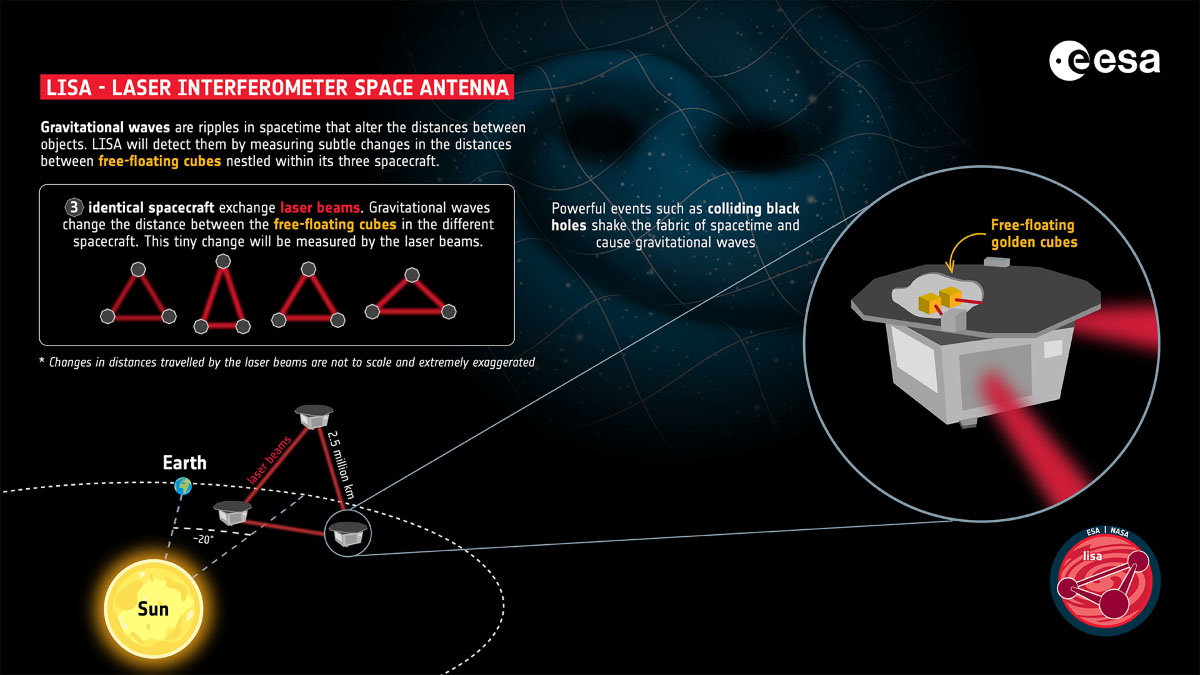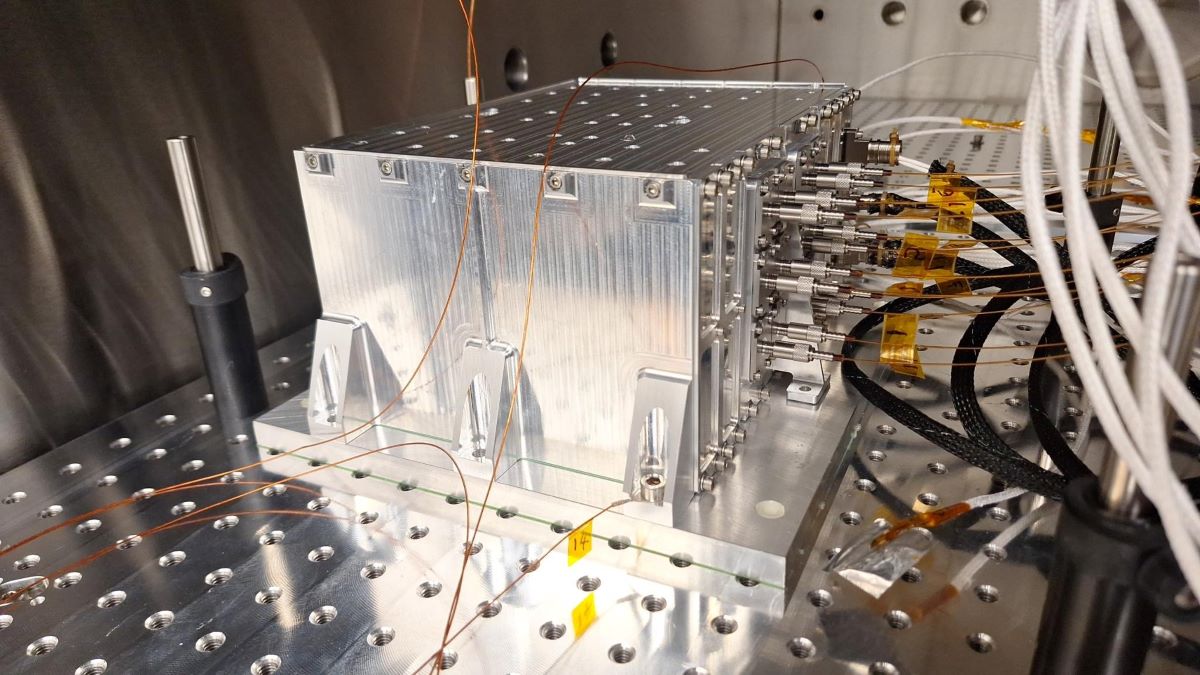UF to play key role in groundbreaking Laser Interferometer Space Antenna mission
The University of Florida’s Herbert Wertheim College of Engineering, in partnership with NASA, is making a significant contribution to the Laser Interferometer Space Antenna (LISA) mission — a groundbreaking endeavor that the European Space Agency (ESA) has now formally adopted.
UF is the only academic institution in the United States to be awarded a contract to develop hardware that will fly on the LISA mission.
LISA, set to launch in the mid-2030s, is an innovative gravitational wave observatory for detecting waves at frequencies beyond ground-based detector capabilities. It involves three spacecraft orbiting the sun, aiming to advance the understanding of the universe, including the origins and evolution of massive black holes. NASA's contributions include crucial technologies for LISA, with UF's Precision Space Systems Laboratory developing the Charge Management Device.
"The adoption of LISA marks a huge leap for astrophysics,” said John W. Conklin, Ph.D., the principal investigator at UF’s Precision Space Systems Laboratory. “Our Charge Management Device work showcases the Department of Mechanical and Aerospace Engineering’s important contributions to NASA’s mission."
The Charge Management Device, controlled by the spacecraft’s computers, emits ultraviolet (UV) light with exact timing and intensities. The UV light is channeled through custom-designed, multi-core optical fiber cables to release photoelectrons from LISA's “test masses” (golden cubes that are freely floating inside the spacecraft without any physical contact). These cubes, acting as "gravity sensors," serve as end mirrors for laser beams that are integral in detecting gravitational waves.

An infographic to detail how the LISA mission will measure using laser beams and free-floating cubes. Credit: ESA/ATG Medialab, CC BY-SA 3.0 IGO
Maintaining the electrical neutrality of these gravity sensors is vital to minimize forces that could disrupt the accurate detection of gravitational waves. LISA needs to operate in an environment virtually free from any external forces — less than one-quadrillionth of Earth's gravitational pull. This level of sensitivity is comparable to detecting the minute weight of a single large virus or a small bacterium.
Each Charge Management Device uses 12 UV light-emitting diodes (LEDs), with six devices needed across three LISA spacecraft. The devices must operate reliably for the duration of the LISA mission and meet strict standards for weight and power.

Each of the three LISA spacecrafts will be equipped with two of the Charge Management Devices like this prototype pictured here. Credit: UF/PSSL, Lea Bischof
UF’s Department of Physics, within the College of Liberal Arts and Sciences, is also contributing to the mission by supporting the development of LISA’s telescopes that will beam the laser between the spacecraft. This team’s effort involves ensuring the telescope's dimensional stability against temperature fluctuations to a picometer scale.
“ESA's adoption of LISA paves the way for a deeper understanding of our universe,” said Peter Wass, Ph.D., the program manager at the Precision Space Systems Laboratory. “At the University of Florida, we're deeply proud of our role in this groundbreaking mission."
The LISA mission will revolutionize researchers’ understanding of the universe, enhancing scientific knowledge beyond what can be obtained through electromagnetic waves. The University of Florida's involvement in LISA is a major contribution, offering unique opportunities for students and faculty. It positions the Herbert Wertheim College of Engineering at the forefront of aerospace engineering and scientific discovery, showcasing the university's dedication to pioneering research.
Simon Barke is a physicist and assistant research scientist in the UF Department of Mechanical and Aerospace Engineering. Emily Hinds, marketing and communications specialist for the UF Department of Mechanical and Aerospace Engineering, contributed to the story.
